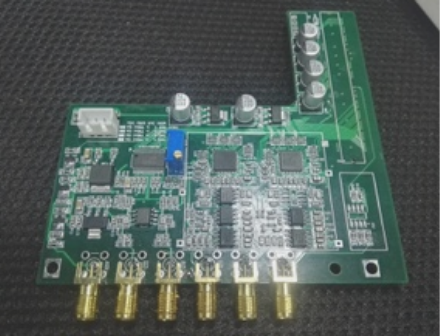FPGA cross-border acquisition speeding horizontal integration vertical innovation seeking common ground while reserving differences
The arrogance of FPGAs on advanced technology roads has brought about the challenges of the following: On the one hand, after entering the 20nm and 14nm stages, not only the complexity of FPGAs is improved, but also the peripheral power management and other chips have also proposed "advance with the times". Requirements. On the other hand, with the development of SoC FPGA and 3D IC technology, FPGAs are constantly accelerating the replacement of ASSP and ASIC, but this still needs more breakthroughs, the biggest obstacle is the interconnection problem. In addition, with the increasing complexity of FPGA systems, competition is not only a contest of product performance, but also how to help customers simplify design, speed up the market, etc., which requires breakthroughs in integration and design tools. Responding to these challenges Recently, the two giants of FPGA have adopted the number of "the same way".

Cross-border acquisition speeding horizontal integration
FPGAs have become complex digital processors, providing them with very challenging currents, and future 14nm FPGAs require higher power supply accuracy.
After announcing the acquisition of Enpirion for half a year, Altera introduced the first product of the combination, and introduced a reference design that combines CycloneV SoC FPGA and Enpirion PowerSoC power products. Mark Davidson, director of marketing for Altera's Power Business Unit, said that FPGAs have become complex digital processors, including high-performance analog devices, which are very challenging to supply current. In the future, 14nm FPGAs have higher requirements on power supply accuracy. If the voltage range exceeds the requirements of the specification, it may cause the FPGA to fail or even burn out. Moreover, engineers engaged in FPGA development are generally good at design and development of digital circuits, and the expertise in analog power supply may be slightly insufficient. To help customers solve these challenges and simplify design, Altera and Enpirion have developed an easy-to-use, efficient and comprehensive power solution.
It is understood that Enpirion's PowerSoC DC-DC power converter integrates controller, high-frequency power field effect transistor and several inductors, which not only meets the dynamic performance requirements of FPGA power supply, but also has many advantages in system, such as Reduced footprint layout by 50% and power consumption by 35%. Due to the excellent transient performance of the control loop, the FPGA decoupler capacitor usage is reduced by 50%. With low noise and low ripple, it can be efficiently Power the transceiver and PLL. In addition, it also reduces the number of components while improving system reliability and reducing life cycle costs. Mark Davidson said that through this solution, the customer's design process can be reduced from 18 steps to 6 steps, and with PowerSoC's reference design process, it can even be reduced from 6 steps to 3 steps.
Vertical innovation seeking common ground while reserving differences
Xilinx's Virtex VU440 UltraScale device doubles the capacity of the industry's largest capacity devices to 4.4 million logic cells.
Xilinx is taking the path of vertical innovation. Following the announcement of the industry's first 20nm device in July 2013, it also announced that 20nm All Programmable devices will use the industry's first ASIC-level architecture, UlstraScale, to extend applications to tens of billions of ASIC/ASSP and embedded market segments. . In November 2013, one of the devices was shipped first, and with the support of the only SoC enhanced design kits Vivado and UltraFast, providing ASIC-class performance advantages.
Future acceleration of vertical and horizontal integration
With the help of horizontal integration and vertical innovation, FPGA manufacturers will accelerate the integration and form more powerful products.
With the dual drive of product upgrade and application requirements, FPGA will continue to develop in the following directions: high density, high speed, wide frequency band, low voltage and low power consumption, and low cost and low cost. The price is four, system integration, and the fifth is dynamic reconfigurable and single-chip cluster. These development directions are not mutually exclusive, and can even go hand in hand. FPGA manufacturers will also use the power of horizontal integration and vertical innovation to accelerate the integration of the above-mentioned development direction and form a more powerful product.
And these innovations have to rely on the power of the "software platform", because FPGA time-to-market and cost largely depend on how developers use tools to solve the next generation of complexity. From FPGA to All Programmalbe, from the previous single process node to the coexistence of multiple processes, the three

